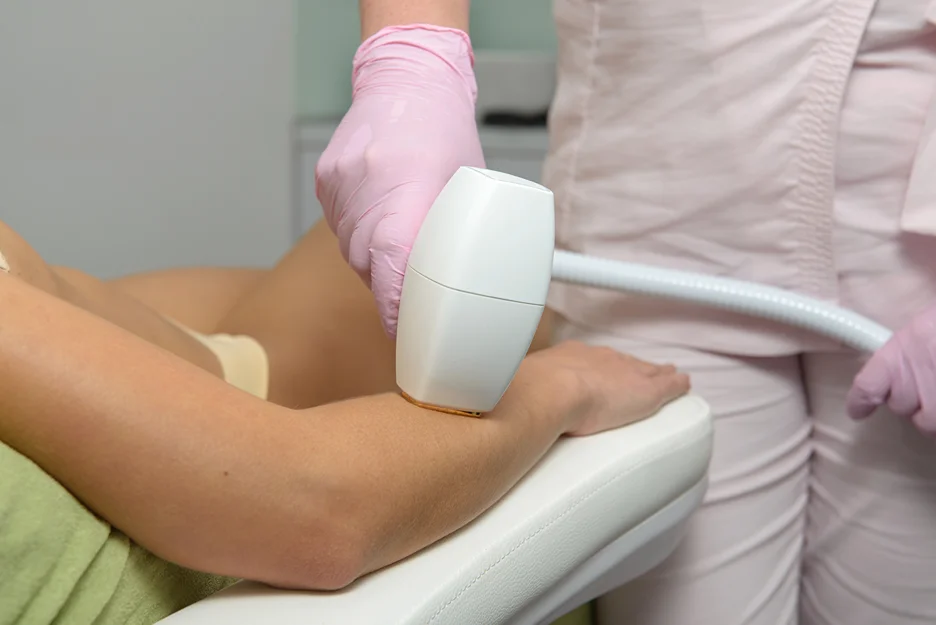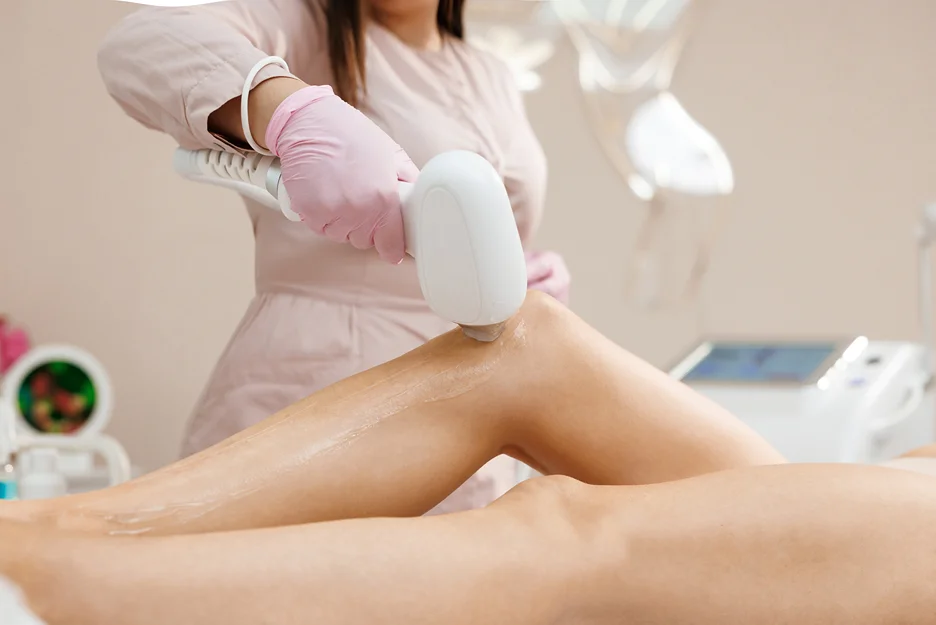How to Prevent and Treat Loss of Skin Pigment After Laser Treatments
Hypopigmentation is an unfortunate side effect some patients experience after laser hair removal treatments. While the latest laser technology has made the procedure generally very safe for most skin tones, improper settings or aftercare can still disrupt melanocytes and cause visible spots or discoloration.
As a top laser clinic serving New Jersey, Ethos Aesthetics + Wellness understands how frustrating this complication can be. Our team of experts, led by Dr. Soni, takes every precaution to avoid hypopigmentation. We also offer the latest treatments to restore your natural, even complexion should any pigment issues arise.
This guide will cover everything you need to know about hypopigmentation from laser hair removal. Read on for causes, prevention tips, symptoms to watch for, and how to treat post-laser pigmentation problems.
What Is Hypopigmentation and What Causes It After Laser Hair Removal?

Hypopigmentation refers to a lightening of the natural skin color due to lower melanin levels. Melanin is produced by specialized pigment cells called melanocytes and gives skin its coloration.
When melanocytes are damaged or destroyed, they cannot produce enough melanin, resulting in pale white patches on the skin.
Laser hair removal works by targeting the pigment in hair follicles with pulses of intense light. For patients with darker skin tones, improper laser settings can also impact melanocytes in the surrounding skin, not just the hair follicle melanin. This can disrupt melanin production and lead to hypopigmentation.
| Factors that can contribute to melanocyte damage | |
| 1 | High laser energy settings beyond what darker skin can tolerate |
| 2 | Use of certain laser wavelengths like Ruby or Alexandrite lasers |
| 3 | Tanning or untreated sun damage before laser sessions |
| 4 | Technician error resulting in overtreatment |
| 5 | Genetic predisposition for pigmentary disorders |
With the advanced devices at Ethos Aesthetics, Dr. Soni customizes treatments for each patient’s unique skin type and hair characteristics. This prevents energy levels from exceeding the skin’s threshold. Our team is specially trained on treating darker complexions that require more caution.
How Common Is Hypopigmentation After Laser Hair Removal?
Most patients who undergo laser hair removal at a professional clinic will not experience long-term loss of skin pigment. However, hypopigmentation is still a risk, especially for those with darker complexions.
- Up to 10% of patients can develop some pigment changes shortly after laser treatment. With proper care, this often resolves within a few weeks.
- 1-2% may deal with persistent hypopigmentation lasting months or years. Darker skin types have higher occurrences.
- Patients of color are overall more prone to pigment problems from lasers.
At Ethos Aesthetics, we take a conservative approach with customized settings to produce gradual results while avoiding side effects like hypopigmentation. This keeps risks low even for sensitive skin types.
We also educate our patients on proper aftercare and what to watch for. Early intervention helps optimize outcomes if pigment changes do occur.
Explore Our Customized Treatments for Safe and Beautiful Skin – Contact Us Now!
How To Prevent Hypopigmentation

While not every case can be avoided, these tips will reduce your risk of developing hypopigmentation after laser sessions:
Avoid UV Exposure
Tanned skin is more vulnerable to laser damage. Follow our pre-treatment guidelines to stay out of the sun and use broad spectrum SPF 30+ sunscreen diligently on exposed areas.
Choose an Experienced Provider
Go to a dermatology clinic with particular expertise in treating darker skin tones. Their staff will know how to adjust settings to prevent hypopigmentation.
Use a Gentle Laser Device
Newer, more advanced laser and IPL devices use wavelengths safer for darker pigments. We use the latest laser system which minimizes melanocyte trauma.
Follow Aftercare Diligently
Keep treated areas covered, hydrated, and protected from sun per our post-care instructions. This helps skin heal optimally.
Stop Treatment if Issues Arise
Inform us immediately if you notice any pigment changes so we can adjust the treatment plan and avoid worsening hypopigmentation.
Following Dr. Soni’s recommendations before, during and after laser hair removal gives you the best chance of avoiding pigment loss for smooth, even-toned skin.
Symptoms of Hypopigmentation To Watch For
It’s important to monitor your skin closely after each laser session. Call our office promptly if you notice any of the following common symptoms:
| Symptoms | Description |
| Light Patches or Spots | One of the first signs of hypopigmentation is lighter spots or areas that stand out against your normal skin color. They often form weeks or months after treatment. |
| Whole Areas Losing Pigment | With more extensive damage, bigger patches of skin can lose melanin. This may occur on entire sections that were treated, like the legs. |
| Slow Return of Color | Initially the skin may look irritated right after the laser, but quickly returns to normal. With hypopigmentation, the light areas persist for longer periods. |
| Other Skin Changes | Severe melanocyte damage can also lead to textural changes, dryness, and increased sensitivity. The affected areas may not respond like the surrounding skin. |
Catching hypopigmentation early allows for quicker resolution. Call Ethos Aesthetics right away if your treated skin looks significantly lighter in spots or patches anywhere from 2 weeks to 2 months after laser sessions.
Stay Vigilant for Beautiful Skin – Schedule Regular Check-Ups with Ethos Aesthetics!
Treatments for Hypopigmentation from Laser Hair Removal
If pigment loss does occur, don’t panic. There are various medical therapies we can provide to restore your natural complexion:
Laser Resurfacing Procedures
Specialized lasers can be used to precisely remove the top hypopigmented layer of skin and stimulate collagen production and melanocyte activity in the deeper layers. This helps rebuild pigment from the base up. Ablative and fractional ablative lasers like CO2 and Erbium lasers are commonly used.
Phototherapy
Controlled doses of UVB light are applied to the skin to stimulate melanocyte activity and melanin synthesis. This helps even out skin discoloration and rebuild pigment levels. Phototherapy options include focused UVB lamps, excimer lasers, or concentrated psoralen + UVA treatments.
Topical Creams
Pigment creams containing ingredients like hydroquinone, retinoids, azelaic acid or kojic acid help inhibit melanin production in surrounding skin to match lightened areas. Over time, this evens out tone. Creams must be used consistently over weeks to see results.
Chemical Peels
Light chemical peels with glycolic or lactic acid enhance exfoliation of the skin’s top layers to reveal fresher skin underneath. This kickstarts melanogenesis and helps rebuild pigment from the base up. Repeated treatments are often needed for best effect.
Microneedling
Microneedling creates controlled micro-injuries in the skin to induce collagen production and increased blood flow. This aids the skin in healing itself and regenerating melanin supplies in hypopigmented areas. Multiple treatments are usually required.
Camouflage Makeup
Special pigmented camouflage makeup products can help visually even out skin tone temporarily. These provide coverage for skin discoloration while other treatments take effect.
With a combination approach tailored to your unique case, we can make significant improvements in skin tone within a few months. While rare, permanent pigment loss can occur. Early and consistent treatment provides the best outcome.
Why Choose Ethos Aesthetics for Your Laser Hair Removal?

When you choose Ethos Aesthetics + Wellness as your provider for laser hair removal in New Jersey, you get:
- Customized Settings: We personalize wavelength, energy level, and pulse duration to your exact skin type and hair color for optimal safety and results.
- Advanced Technology: Our laser uses virtually painless pulses of light to harmlessly target hair pigment across all skin tones.
- Specialist Expertise: Our team receives ongoing training on performing laser procedures safely and effectively on patients of color.
- Careful Monitoring: We watch closely for any pigment changes during your treatment plan and intervene promptly as needed.
- Inclusive Options: We offer multiple therapies to rebuild melanin and restore your complexion if complications like hypopigmentation occur.
With our tailored approach, years of experience, and state-of-the-art technology, we can remove unwanted hair smoothly and safely while avoiding lasting discoloration.
Don’t let fears of hypopigmentation stop you from trying laser hair removal. Book a consultation today to discuss your options for achieving stubble-free skin without pigment loss. Our knowledgeable staff is happy to answer all your questions!







